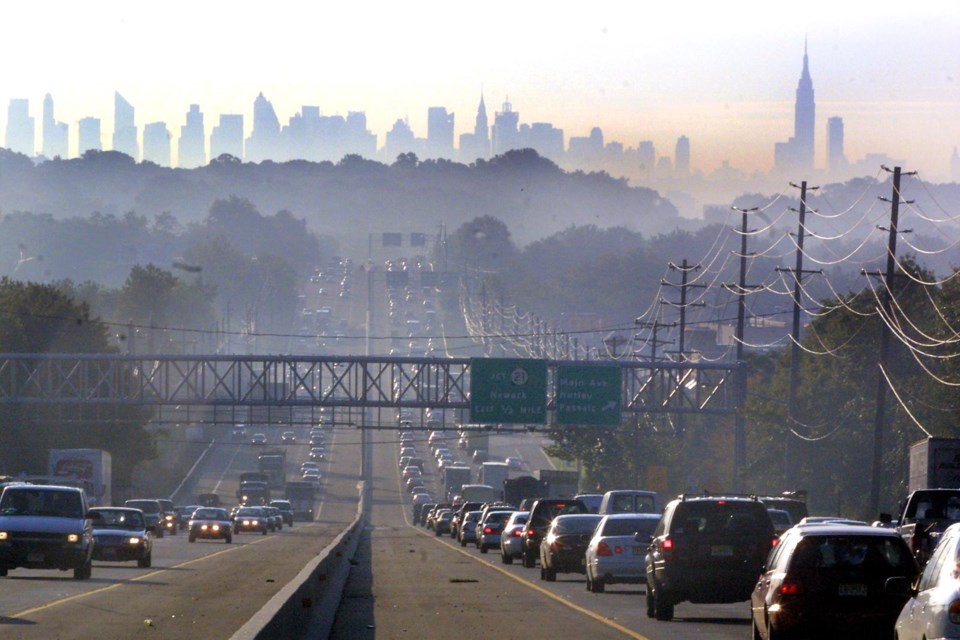An important contributor to our large ecological footprint is urban sprawl, an energy and resource-hungry form of development that we cannot afford. It also is bad for our health.
Those health impacts include higher rates of physical inactivity and obesity due to driving rather than active transportation; respiratory and cardiovascular disease due to air pollution; more traffic injuries and deaths resulting from car-dominated transportation; and impacts on mental health and social well-being.
From a health and environmental perspective, we have to stop urban sprawl, concentrating all further growth within the existing urban boundary. But that can run into resistance from neighbours who might not want infill developments. This tends to push new developments into more concentrated areas with one response being highrise development. That seems to be an increasing response in Victoria.
But highrises come with their own health problems, especially for children.
In 2007, Dr. Robert Gifford, an environmental psychologist and professor at the University of Victoria, published a review of evidence on the consequences of living in highrise buildings. While acknowledging such research is difficult and there are other factors to consider — such as socio-economic status, family type and building location — he did reach conclusions.
“The literature suggests that highrises are less satisfactory than other housing forms for most people, that they are not optimal for children, that social relations are more impersonal and helping behaviour is less than in other housing forms, that crime and fear of crime are greater, and that they may independently account for some suicides.”
In particular, he noted: “No evidence we could find shows that highrises are good for children.”
So, what is the answer?
There are a number of good options. The first is what Todd Litman, an internationally recognized transport and urban development expert based here in Victoria, suggests: “Moderate-density housing in walkable urban neighbourhoods.” Moderate and even high density, we should recall, characterizes some of the world’s most popular cities, such as Copenhagen and Paris.
As to walkable, Melbourne has adopted the principle of the 20-minute neigbourhood, giving people the ability to meet most of their everyday needs within a 20-minute walk, cycle or local public-transport trip from their home.
To make such housing livable, we could use courtyard housing. It creates shared space where residents can gather, but still separates the public and private realms of housing. In a 2014 report for Abbotsford council, social planning consultant Cherie Enns noted such housing “creates a safe and nurturing place for children and youth, and provides a social connection,” which suggests it can address the problems that highrises fail to address.
Litman suggests that such housing be built everywhere, an approach he called the 1.5 per cent solution. In a July 2018 commentary in the Times Colonist, he pointed out that Victoria’s population grows at 1.5 per cent annually and suggested that the city’s neighbourhoods should all grow by that amount. That would mean between 25 and 125 new units every year, some of it infill, depending on the neighbourhood. That does not seem to be a huge challenge.
These forms of housing would also be more affordable. Clustered housing is more energy- and space-efficient and people would not need a car, or certainly not the two or three cars many suburban families how have.
While these developments could be in residential neighbourhoods, we could also mainstreet existing commercial and transit corridors by building three- to five-storey buidlings with commercial on the ground floor and a mix of residential and offices above. Stretches of Tillicum Road and Hillside Avenue, alongside or opposite their malls, come to mind. This could create the type of lively urban street that we find attractive in European cities.
There is no escaping the fact that a choice between urban sprawl and highrise towers is a false choice. Both bring health problems and neither is the answer to our urban challenges. Instead, we need to re-create the urban village: Livable, affordable, sustainable and healthy.
Dr. Trevor Hancock is a retired professor and senior scholar at the University of Victoria’s School of Public Health and Social Policy.



